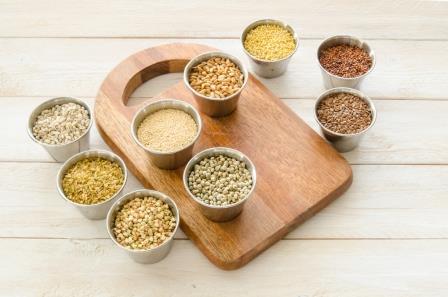Psychic Blog
Grains
13 Dec 2021

In the UK the recommended level of fibre an adult should have each day is 30g. However, many of us struggle to reach even half of that amount. Most of us are aware that we need to up the number of whole grains we consume in our diets. They are a type of carbohydrate that releases energy slowly into our body, and alongside other dietary measures help to reduce heart disease and incidences of type 2 diabetes.
Repetitive Diet
A lot of us are guilty of buying and eating the same things week in and week out. In terms of whole grains, we often think of wholemeal/seeded bread, brown rice or breakfast cereals. The truth is, whole grains can be a lot more exciting than that, and many ancient grains are making a comeback.
Grains & Wholegrain Meaning
Wholegrain means all components of the grain are in-tact: the bran, the germ and the endosperm. Providing you with the whole range of carbs, fats, proteins, minerals and vitamins these grains can offer.
Here are some grains to try and their approximate fibre content per one cup cooked:
Amaranth (5g)
You could try this grain in place of oats to make porridge or add it to salads for variety and texture.
Barley (6g)
Barley tastes great in hearty stews, allowing you to use less meat (if using protein). It is neutral in taste and will take on the lovely flavours like wine and stock that you use for the dish.
Buckwheat (5g)
Buckwheat is quite a nutty grain and can take some time to cook; you could add it to meatballs or in a falafel recipe as a bulking agent, or try it in a soup.
Freekeh (11g)
This grain has a firm texture and an almost smoky taste; you can pretty much substitute it for any recipe that it calls for rice, couscous or bulgur wheat.
Quinoa (5g)
Quinoa comes in different colours and is often sold in a tri-colour pack. It has a lighter texture than some of the other grains but still holds a nutty flavour. Again, it can be used in place of rice or oats and is great in a bowl salad, lending colour, texture and flavour.
Wheatberries (4g)
Wheatberries are a larger grain, so it can be used as a side dish to accompany meat or mixed with other foods like vegetables and peas to create a warm salad.
You could also try Spelt, Maize (Corn), Rye, Millet, Oats, Wild Rice and Kamut. You are not just limited to grain products; many of the above are found in bread, pasta, crackers, oatcakes, muesli, popped corn and can be bought as flour for home baking.
TweetBrowse Our Blog
Categories
- Blog Home
- Angels
- Astrology
- Book Reviews
- Celebrity
- Crystals
- General
- Love
- Mediumship
- Paranormal
- Readers
- Seasons
- Special-Offer
- Spirituality
- Superstitions
- The Psychic Gift
- Wellbeing